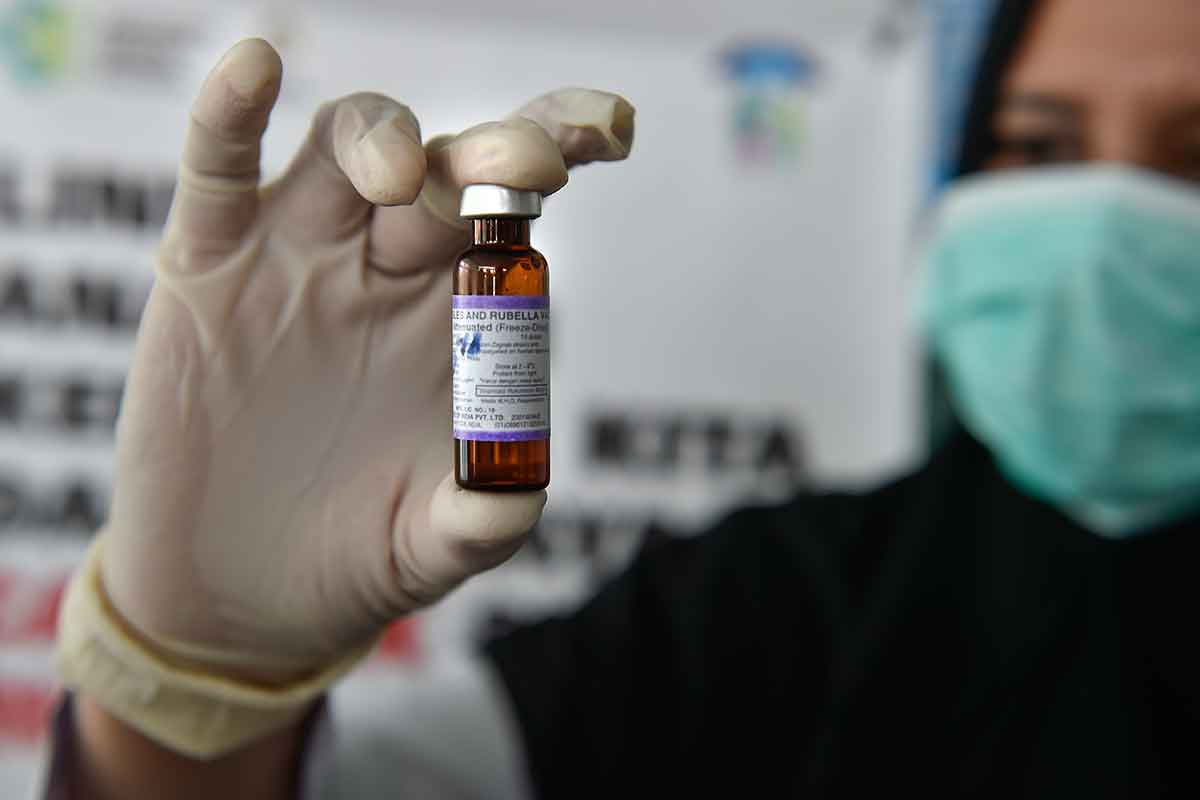A growing band of immunisation detractors is driving a surge in measles cases from the Philippines to Washington State that threatens to derail efforts to wipe out the disease.
Worldwide cases of the viral illness increased by about 50 percent to more than 229,000 last year, according to preliminary data from the World Health Organization (WHO), which included “vaccine hesitancy” in its list of top 10 threats to global health this year. The contagion has cropped up in Israel, Greece, Madagascar, the Ukraine and Venezuela, among others.
While measles’s resurgence can’t be blamed on a single cause, a reluctance by parents to vaccinate their children has emerged as a global driver. Lingering wariness about the side effects of some shots, despite evidence refuting a 1998 claim that linked the measles, mumps, and rubella vaccine to autism in children, is frustrating attempts to stop some 1.5 million young children from dying from preventable diseases each year.
“The anti-vaccination movement has generated a lot of misinformation,” Howard Zucker, New York state’s commissioner of health, said in an interview. “We have a powerful Internet that’s prone to sharing this content. As a health commissioner, paediatrician and a dad, this is heart-breaking.”
Under one of the WHO’s 10-year action plans, measles and rubella are targeted for elimination in five regions by 2020, but progress has lagged milestones.
The recent outbreaks are revealing a vulnerability to measles, which can spread through coughing, sneezing and physical contact, even in countries where it was on the verge of elimination. The number of unprotected people in certain areas of the United States (US) is now high enough to allow the swift spread of multiple contagious threats, experts said.
“You will then see subsequently other vaccine-preventable diseases manifest,” said Katrina Kretsinger, leader of the WHO’s measles and rubella team in Geneva. “We may see outbreaks of measles and then you’re likely to see outbreaks of diphtheria.”
Diphtheria, a bacterial disease prevented by a shot that usually combines vaccines for tetanus and whooping cough, is fatal in 5-to-10 percent of cases, according to the WHO.
Spurning vaccines
In the Philippines, the latest measles outbreak killed 70 people in the first six weeks of the year, according to the Health Department there.
In New York, more than 200 cases have been confirmed since October, prompting an effort to advocate for vaccination, especially among parents, teachers and rabbis within orthodox Jewish communities, where measles was introduced last year via travellers arriving from Israel, Commissioner Zucker said.
Vaccination defiance has been growing in the US, Australia and Europe, and it’s gaining traction in some middle-income countries. In the Philippines, suspicion grew after officials blamed children’s deaths on a dengue vaccine administered by the previous government starting in April 2016, without citing any proof.
The perceived risks of vaccination have increasingly been cited as the main reason for vaccine hesitancy in middle-income countries like the Philippines and Brazil, eclipsing previous barriers such as a lack of awareness or religious beliefs, according to a study in 2018 by WHO and United Nations International Children’s Fund (UNICEF) researchers.
Before a vaccine became available in 1963, almost all children in the US had been infected by age 15, and as many as four million Americans caught measles annually, leading to as many as 500 deaths, according to the Centers for Disease Control and Prevention (CDC) in Atlanta.
The disease, known for the rash it produces on patients’ skin, spreads easily because it thrives in the throats of infected people, heightening the chances of airborne contagion.
An estimated 90 percent of those who come into close proximity with an infected person will catch it unless they are vaccinated or have natural immunity, the CDC estimates. The virus can live in the airspace where a person has coughed or sneezed it out for as long as two hours, according to the CDC.
With the global vaccination rate for measles stalling for almost a decade at 85 percent – shy of the near 95 percent level needed to keep the disease from spreading at all – the danger of further contagion remains.
“In many countries, not just in the West, parents have lost sight of what it means to have these various types of diseases,” the WHO’s Kretsinger said. “There’s a degree of complacency because these diseases aren’t as visible as they have been in the past. We can’t take our foot off the accelerator at this point.” - Bloomberg
